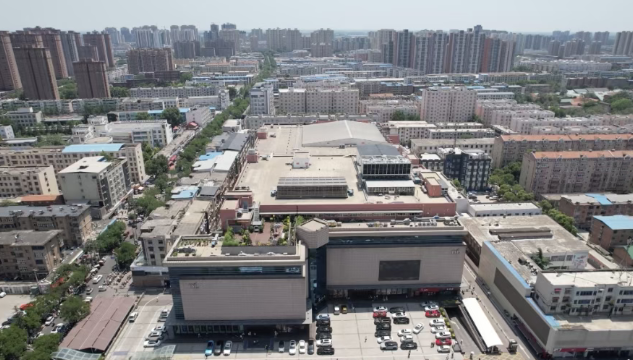One of the topics recently discussed on social media is the smart city Los Angeles 2028, a project currently under development. This comes at a time when Los Angeles faces an increasing challenge from wildfires and urban fires, exacerbated by climate change, rising temperatures, increasing urban density, and regional government policies. The ongoing fires, which have consumed 163 square kilometers of Los Angeles territory (roughly three Manhattans) since January 7 and destroyed more than 12,000 buildings, many of which are multi-million-dollar properties, have been linked to the Santa Ana winds. The city’s fire departments have experienced heightened pressure in managing multiple fire incidents. Wildfires in surrounding areas have threatened both suburban and urban regions, putting homes and businesses at risk. On social media people are discussing the connection of the fires with the smart city LA 2028 project.
Urbanization and fires
Every year, more than 180,000 people die in fires or from burn-related injuries worldwide. According to the 2022 report from the CTIF World Fire Statistic Center, there were 3,732,434 fires, 19,608 fatalities, and 55,625 injuries in 55 countries. Of those who died in fires, 83% were victims of residential fires. In 42 major cities, 284,137 fires were reported, resulting in 2,181 deaths and 7,902 injuries. Over 95% of fire-related deaths and injuries occur in low- and middle-income countries. Fires also release more greenhouse gases into the atmosphere, and some of the smoke can deposit soot on distant snow and ice, accelerating the melting that has already been exacerbated by global warming.

As the case in Los Angeles demonstrates, urban environments are increasingly at risk from fires, which can cause significant loss of life, property damage, and environmental harm. As cities grow, the need for effective and sustainable fire prevention, detection, and suppression technologies becomes even more critical. Can smart city development projects help address these challenges? With the advent of smart technologies, cities now have the opportunity to not only improve their fire safety measures but also do so in ways that are sustainable, efficient, and environmentally friendly. This article explores the role of sustainable smart technologies in combating fires in urban settings, highlighting real-world examples of their implementation.
Sustainable tools and smart instruments for fire prevention
Smart fire detection systems
One of the most crucial aspects of fire safety in cities is early detection. Traditional smoke detectors are still commonly used in homes and buildings. These systems can be slow to respond and often lack the integration needed for citywide fire safety. However, modern smart fire detection systems using IoT (Internet of Things) technology to detect smoke or heat anomalies can provide real-time data, integrate with citywide networks, and improve response times. Additionally, these smart detectors can be connected to a cloud-based system that monitors and analyzes data from each sensor in real-time. This real-time data can also be used to predict fire risks based on weather conditions and building occupancy patterns, enabling more proactive fire prevention strategies. For example, in the UAE, residential homeowners are required to install fire detection devices and subscribe to the civil defense e-system. Commercial buildings and residential apartments are monitored by the Intelligent Command and Control solution (Hassantuk).
Smart water system for fire suppression
Water-based fire suppression systems are one of the most effective ways to control fires. However traditional systems often waste water, especially in large urban areas with frequent false alarms. Smart water systems can significantly improve the efficiency of fire suppression while minimizing environmental impact by ensuring water is used only when necessary. These smart water networks can work alongside fire detection technologies. For instance, when a fire is detected in an urban area, the system can trigger automated suppression devices like sprinklers or fire-resistant barriers designed to contain flames and reduce damage. This reduces the reliance on fire trucks and other manual water sources, saving water and energy.

AI and big data for predictive fire prevention
Artificial Intelligence (AI) and big data have the potential to revolutionize fire prevention by predicting fires before they occur. AI can analyze vast amounts of data, such as weather conditions, building occupancy, and past fire incidents, to identify areas at high risk. In Santa Clara County, California, AI sensors are being implemented to analyze air temperature and particles in the air to detect fires and prevent larger ones from igniting. These sensors cover about 6,000 acres across the county.

Urban fire management with drones
In addition to smart building technology, drones are increasingly being utilized in urban fire management. Drones equipped with infrared cameras, thermal imaging sensors, and smoke detection technology can assist fire departments by providing real-time aerial views of fire-prone areas, enabling more precise and efficient firefighting strategies. A notable example of this is drone-assisted fire management in Dubai. Drones are used for regular inspections of high-risk areas, including industrial zones, construction sites, and buildings with large glass facades that are difficult for firefighters to access. These drones can quickly identify hotspots, track the spread of fires, and even direct firefighters to specific locations. Dubai is also developing autonomous firefighting drones capable of carrying fire-extinguishing equipment and delivering it directly to the fire. This smart fire management system reduces reliance on traditional fire trucks, conserves resources, and allows for rapid responses to fires, particularly in hard-to-reach urban areas.
Fire-resistant materials and smart building design
Another important aspect of fire prevention is constructing buildings that are fire-resistant. Traditional construction materials are often flammable. Innovative materials and construction methods (such as ductile iron utility poles) can help reduce the spread of fires and enhance safety. Smart technologies can also be integrated into buildings to monitor and mitigate fire hazards in real-time, as well as implement fire-prevention building principles. A widely discussed example of a smart architectural solution is a house the Pacific Palisades Residence in California. This modern green home withstood the flames while neighboring structures burned due to the right decisions in building design. The house used fire-resistant materials such as metal cladding and concrete. The property maintained a clear zone around the structure, preventing the fire from reaching the building. Advanced roofing materials reduced the risk of ember ignition, a major factor in home destruction during wildfires.
Cooling the city and creating natural barriers
Using green spaces and architectural solutions is crucial for lowering temperatures in a city and decreasing fire risk. Natural firebreaks, such as parks, green spaces with fire-resistant native plants, and wide-open areas, can help slow or stop the spread of fires. Increasing the spaces between buildings and reducing vegetation in high-risk areas creates buffer zones that protect homes. Smart zoning in urban planning is also important. By establishing clear guidelines on building density, land use, and construction practices, urban planners can create safer environments. For example, restricting the construction of high-risk facilities, such as chemical plants, near residential areas can reduce the potential for catastrophic fires.

The combination of smart technologies and sustainability offers immense potential for improving fire safety in urban environments. By integrating smart urban planning, early detection systems, smart water networks, fire-resistant building materials, drones, and AI-powered predictive models, cities are becoming better equipped to prevent and manage fires in an environmentally responsible way. As these technologies continue to evolve, they will play a critical role in protecting lives, reducing property damage, and preserving the environment for future generations.


